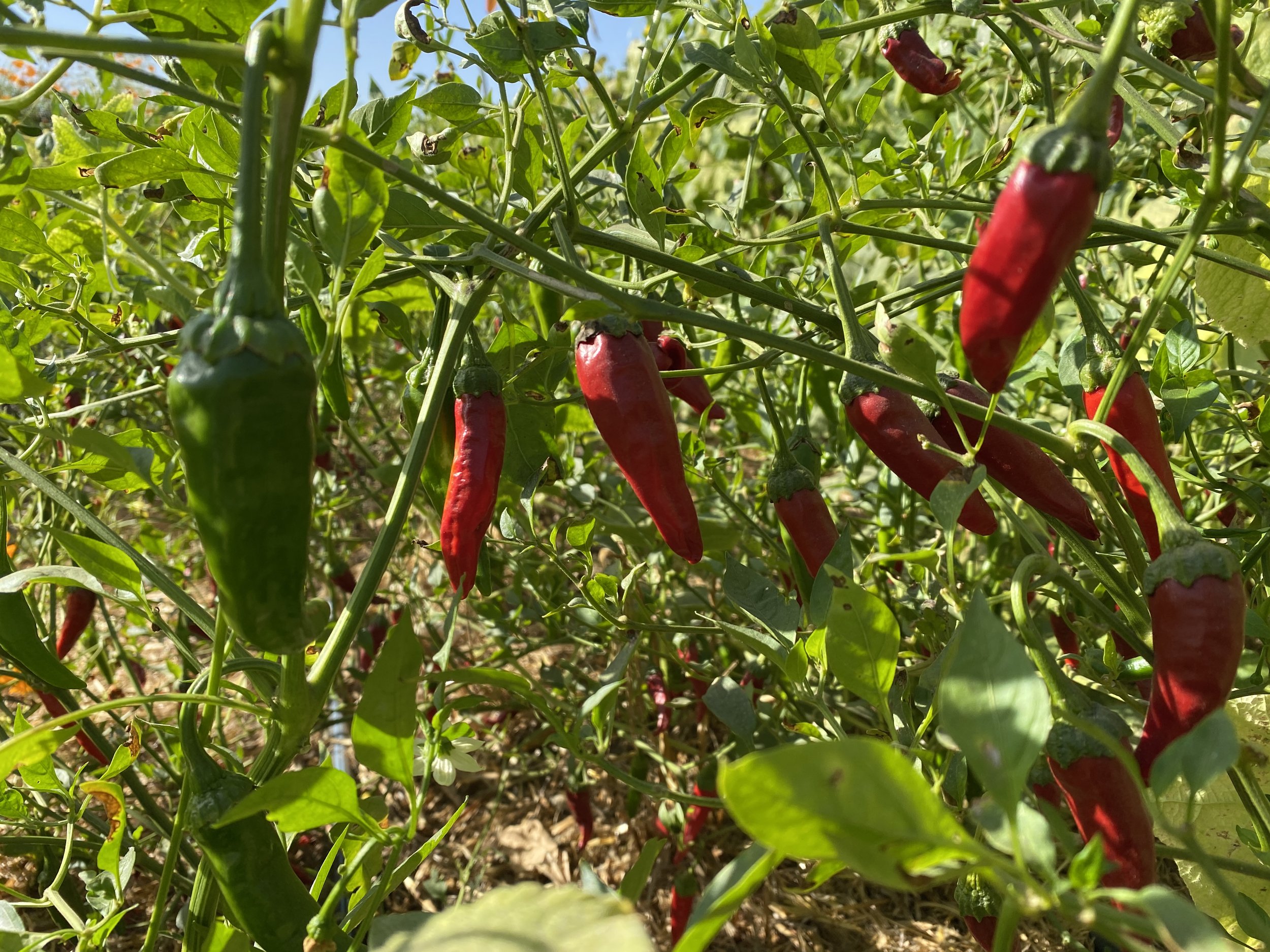Gyopo Gochu
Gochu, 고추, Chili Pepper
Capsicum annuum
Seeds per Packet: 25
This heirloom, originally known as Gokseong Cho, hails from south Jeolla-do. Developed by small farmers in the region, where they selected for earthy/smoky flavors, and prolific production. Small, thin walled peppers are bountiful, with the characteristic deep red color when dried for gochugaru.
This heirloom variety is considered to be 토종, or, a native variety in Korea. Referred to as Gokseong Cho, which is the region in south Jeolla-do where these were preserved, this heirloom was developed by small scale farmers and peasants who championed the unique traits of these peppers in spite of the rising dominance of hybrids within Korea. Small, thin-walled peppers dry well and are the classic bright red color that one expects from their gochugaru. Considering that their roots are in a region famous for gochujang, it's no surprise that their flavor is resonant, savory, and earthy. We affectionately call them Gyopo, which is a term for native Koreans who live outside of Korea. While their original name pays homage to the distinct area where they were found, over the years we have grown them, they have adapted to our conditions and context, and at this point feel distinct, while maintaining the traits that Koreans love in chili peppers.
Days to Maturity: Approximately 70 days from transplanting to green chilies. Harvest first flushes of green fruit to encourage more fruiting. Harvest ripe peppers about 90 days after transplanting and sundry
Growing Tips: Gochu are warm season annuals. They are indeterminate, producing a steady supply of peppers throughout the season. They appreciate fertile, well drained soil with a neutral pH. Amending with lime or gypsum to adjust overly acidic or alkaline soils will aid growth and fruiting.
When to Plant: Start seeds indoors 8 weeks prior to transplanting. Seeds need temperatures of 70F, and soil temperatures of 80F.
Planting Depth: Seeds can be sown in open tray or 200 cell flats ¼” deep, then potted up to 50 cell trays or larger pots once their first true leaf forms.
Spacing: 18-24” between plants
Sun: Full or partial. The thin walls of this variety make it more vulnerable to sunburn on the fruits, so they generally like some afternoon shade. We grow them on the east side of taller crops who give them a break from the sun for part of the day.
Water: Moderate, intermittent watering. Avoid prolonged periods of drought. Mulch can help, and also keep soils cool, preventing blossom drop.
Grower: Namu Farm, Winters, CA




